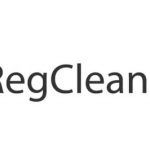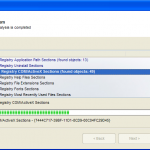
Restoro is a system repair software that can resuscitate your computer and visibly improve its performance. The software is compatible with Windows devices and comes at an affordable price, considering the generous number of tools it offers for the money. From cleaning junk to fixing virus damage and stability issues, Restoro is a must-have repair kit for any Windows user. We have updated our review for 2021 and it continues to impress us with its optimization features. Download Restoro Here!

RegClean Pro made a barely noticeable increase in the PC’s performance even with the benchmarking software. More tech savvy users can customize the areas they want scanned, or exempt. The startup optimizer tool is essential for an increased overall performance of your PC.

Advanced SystemCare PRO promises to boost your PC’s speed by 300 percent, when in reality it actually slowed our test PC down. Even though it did improve the performance of some areas, it very significantly lowered others. It comes with an extensive list of different utilities you can use to further improve your PC’s overall condition.

With an average price and average overall performance boost result, Registry Reviver is a good registry cleaner for a fair price. It comes with a lot less features than our second ranking software, but it found and resolved almost 5000 more Windows registry errors. It’s easy to use and it has a few useful utilities, but it won’t impact your PC’s overall performance too drastically.

WinZip Registry Optimizer is a registry cleaner and registry optimizer developed by WinZip Computing. WinZip Computing is a utility software developer that has various useful programs to offer, for both Mac computers and Windows PCs.
The program comes in two versions: you can download the free version of the program or purchase the paid, more complex version.The free version lets you test the software, get familiar with the settings, run a scan and fix up to 15 issues. The paid version gives you full access to all the features of the program.

With more than two billion installations, CCleaner is probably the most wide spread registry repair software on the market. Our tests concluded that it did cause a slight overall improvement to the entire system, while minimally slowing down the video chat quality. It has great additional features that are automated so even novice users can use them without much thought.

Advanced Registry Doctor Pro is a serious registry cleaner that might not boost your PC’s performance levels, but it will find and resolve all the Windows registry errors it might encounter. It comes with a defrag tool and a compression feature together with the startup optimizer utility. Although its overall performance increase was minimal, Advanced Registry Doctor Pro is still a reliable registry repair app with a few good, efficient tools.

Although PC-Tune Up did register an increase in our benchmark test, the 5 percent improved overall performance isn’t high enough to be considered significant. This particular registry cleaner has an intuitively designed app that is suitable for both novice and advanced users. The included startup optimizer is a useful feature for further improving your PC’s performance.

Ashampoo WinOptimizer produced similar results to our highest scoring registry repair software, with the exception of finding more than 1200 errors more during its initial scan. While it sped up the overall performance of the test PC by 5 percent, it caused a minor lag in the process to other areas it was tested for. It comes with dozens of amazing premium features, and it’s very easy to use.

Rose City Software’s registry repair app found a record number of Windows registry errors among all the other software in our review. It caused a minimal overall performance increase while slowing down the PC in other areas of the test. Their support page is virtually non-existent so if you need to find help, you will have to comb the web to find your answers. All in all, Registry First Aid is a good registry cleaner with a few additional features at a fair price.

Although an average PC user won’t notice a speed boost lesser than 15%, by improving the test computer’s performance by almost 8%, RegistryCleanerKit still did the best job out of all the software we looked at. It doesn’t come with many additional features, but you can currently take advantage of Uniblue’s promotion and get the SystemTweaker app for free. RegistryCleanerKit is a basic, easy to use registry repair software that has a great backup and restore tool. It’s one of the most affordable and reliable product we tested.

With an increase in just over 2 percent, Registry Tuner didn’t boost the test PC’s performance in a noticeable way. It has a simple design you can easily navigate through, and the startup optimizer feature is intuitive so the app itself is very suitable for novice users.
Last updated July 5, 2025

Nobody goes investigating registry cleaners for sheer fun. This kind of software has a very specific use and people tend to turn to it once their devices become unbearably slow. There are many reasons your PC might be running a lot slower than usual, especially if you’ve had it for a longer period of time. If you have an older PC chances are you have had dozens of installed apps on it over the years. The problem isn’t about the installed apps, it actually arises when you go to delete the app from your system. Most programs have a built in uninstall option that does the basic removal of the app from your PC, but what most users don’t know is that these apps, more often than not, leave files and entries in the Windows registry behind. Of course, the best way of preventing this kind of clutter from happening is using a third party software to thoroughly uninstall apps from your PC. Nevertheless, if it’s too late for that and your PC is running sluggish and nowhere near as well as when you bought it, registry repair software comes to the rescue. These apps are used to basically scan, sweep and restructure your Windows registry.
Over time your computer’s registry gets cluttered with false entries, app errors or even previous fixes gone wrong. Initially, registry repair software runs a scan of the Windows registry and finds all issues it thinks need fixing. The number of errors found ranges from a few dozen to a few thousand, with some apps. Most of them allow you to choose which exact problems you wish the program to resolve, while others just alert you of some possible fixes that might cause problems later. In any case, almost all registry repair cleaners in our review have the option of backing up your registry before making any changes to it. Some even do it automatically before doing anything. This feature is crucial since if you’re not too tech savvy and you let your new registry repair software run wild on its own it might delete or fix something it wasn’t supposed to which might lead to other apps on your computer to malfunction.
Another important thing to have in mind is that ALL Windows registry repair apps will promise to boost your system or increase its overall performance. This just simply isn’t true. While the apps themselves do a great job by cleaning your system’s registry thus preventing your PC from running even slower, none of them will drastically improve or boost your computer’s overall performance. Some apps will slightly increase the speed at which your web browser works, or you might notice a minimal improvement in the video chat quality, but these improvements usually come at the cost of some other area slowing down. Even the most efficient registry cleaner in our top ten lineup managed to increase the overall efficiency of the PC it was tested on by less than 8 percent. In our experience, any result below 15 percent won’t really make much of a difference to your user experience.
To test all ten registry repair software in our selection we used an eight-year-old PC burdened with countless Windows registry errors and years of neglect. We were led by the logic that if an app can clean a registry that hasn’t’ been scanned in years and optimize that already strained system to work better at all, it will certainly have an impact on any newer device. Before installing the app or initiating any scans we installed a benchmarking software to get the baseline performance of our PC. As expected we got very poor results which, considering the PCs state, wasn’t too big of a surprise. Next step was to create a restore point, or a backup of the registry, so we could revert any changes made by the registry cleaners and get a clearer result. After running the cleaning app we benchmarked the system again to see if there were any significant oscillations in the performance results. None of the apps we tested made a notable difference in the overall efficiency of our system. Most users get disappointed when their PCs don’t run 300 percent faster (as one product in our review promises) after cleaning their registry, so it’s important to have realistic expectations and be satisfied that your PC is finally running error free. Depending on the particular product you choose, registry repair apps are usually a part of a bigger package of performance optimizing software. A start up optimizer is the most common follow up app to the basic registry repair software and is used to prioritize the programs that rise with your operating system. Although not all, most of the startup features we tested allow you to fully automate the process so the software does the work without much of your interference. Another feature we often see is the internet optimizer which makes sure your browser is running at its full potential. Some apps allow you to turn on idle scanning which sweeps through your history and cookies while you’re not using the browser and optimizes it for future use.
Although running a registry repair app from time to time is advisable, it’s important to keep in mind that by doing so you won’t notice an incredible increase in your PC’s overall performance. Not one registry repair app we tested managed to pass the 15 percent threshold and cause a significant enough increase for us to notice through day-to-day use. Some apps come as parts of bigger packages (one of the products we reviewed has more than 25 additional utilities), while other equally good ones, come alone. Depending on the price range you had in mind, and the scope of care your PC requires, we’ve compiled a top ten list to help you chose the right registry repair software for you.

While none of the registry repair software we tested made a significant positive impact on the system it was tested on, it did successfully clean the Windows registry of sometimes hundreds, sometimes thousands of errors. These issues in your system’s registry usually accumulate after years of improperly uninstalling programs, changing paths to certain directories or simply by application errors. Registry repair software scans and repairs all errors it comes upon. Some software in our review leave you the option of choosing which specific issues you’d like to fix and excluding certain directories from the search altogether. All of them include a backup, or restore feature that allows you to create a failsafe position you can always go back to in case the most recent fix caused some unexpected complication. Although there are a few registry repair apps we tested that come as an individual product, most of them are a part of a bigger package of system optimizing software. There are a few utilities that come with the registry apps most often, but then there are a few products in our review that include entire suite-worth of extra features when you buy the app.
Probably the most common and basic extra utility to come with a registry cleaner is a startup optimizer. Unlike the registry app, this feature can actually speed up your PC significantly if used periodically. Why is it important to check the app from time to time instead of just letting it run on its own? It’s because, very often, when you install new software it automatically embeds itself into your startup process and inevitably starts draining your PC’s resources. Of course, this can also be manually prevented by running msconfig and (de)selecting the apps that rise with your system. The advantage of using a startup optimizer is that it’s designed for a very high ease of use by even the least computer savvy users.
Another important feature that usually comes included with the registry repair app of your choice is an internet optimizer. If you’re in a habit of quickly scrolling through the installation process when you’re installing a new program, you’ve probably found yourself with at least one extra toolbar integrated in your web browser or some additional software you never remember installing in the first place. The internet optimizer cleans your cookies, clears your history and removes any add-ons you didn’t sign up for.
A file shredder is a less common feature you can come across when buying a registry cleaner. Usually an internet suite tool, the shredder is used to completely remove unwanted files from your PC. Most people think that by deleting a file and emptying the Recycle bin the file is gone from their computer, but in reality it still can be retrieved if you know how to. This is where a shredder comes in handy since instead of simply moving the deleted file, it actually deletes it fully from the PC without any possibility of recovery.
Registry repair apps usually go for anywhere between $19.99 to $29.99, depending on the additional utilities and brand name. If you’re buying during the big holidays you might get a promotional price or snag an additional piece of software by the developer you chose. Although a bigger price tag isn’t necessarily an indicator of better quality, it usually means the software comes with many utilities or allows you to add more devices under one purchase. Even if it might not speed up your system beyond its limits, having a registry cleaner is important in order to keep your PC running smoothly and at the top its abilities.